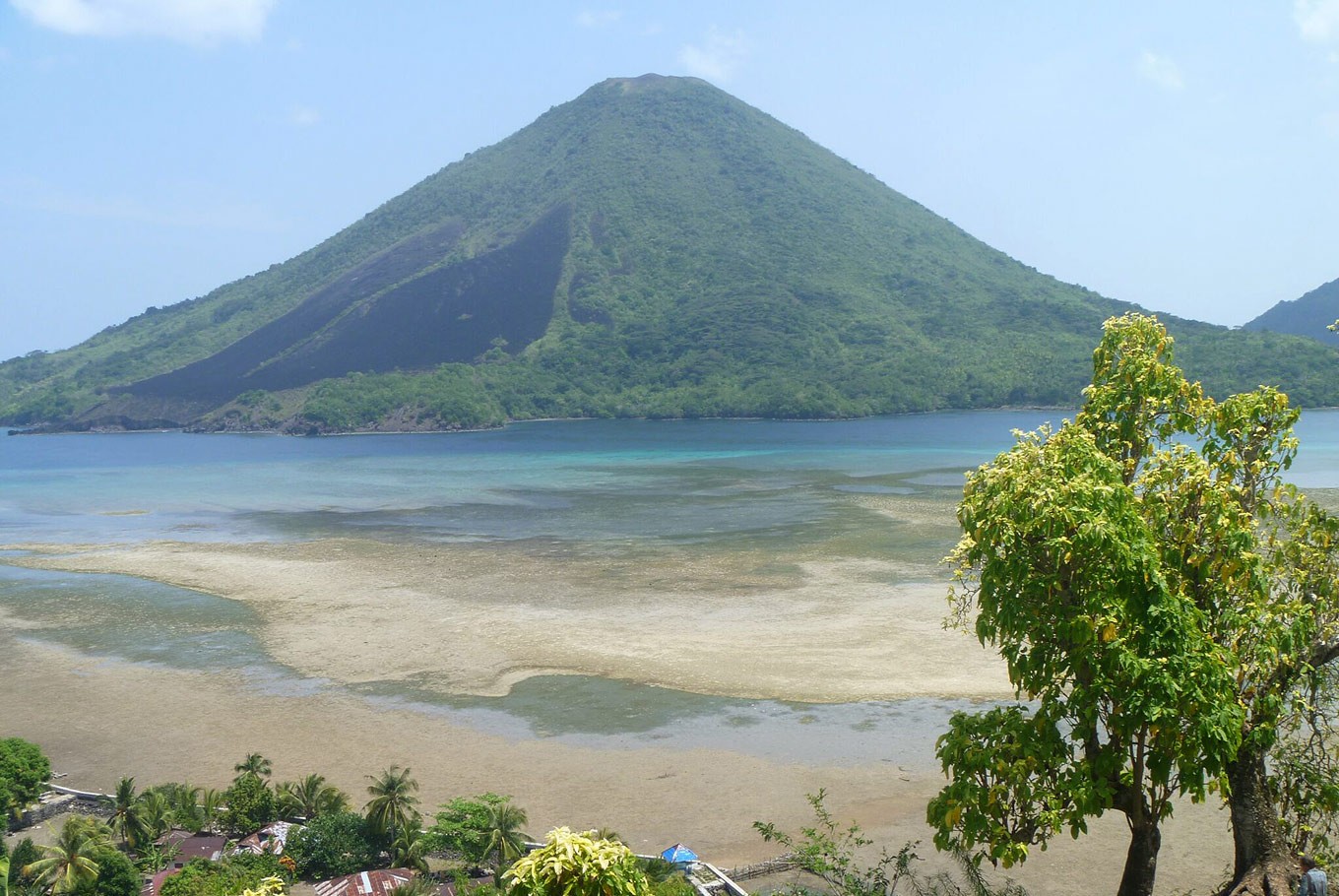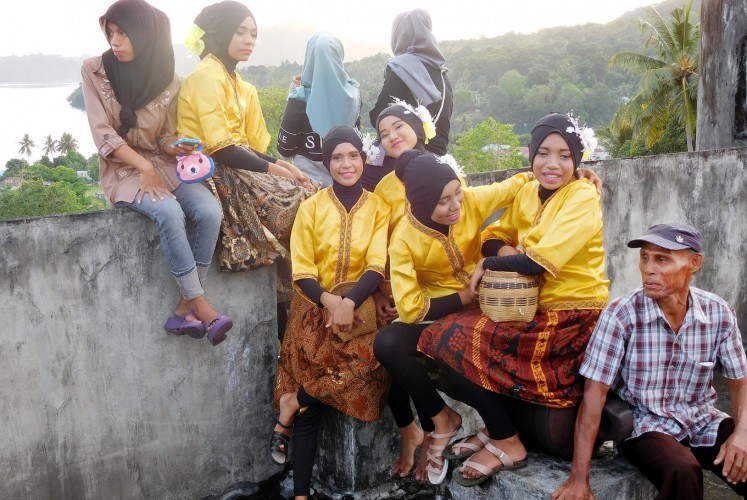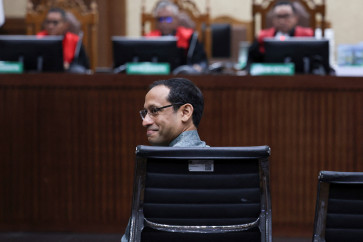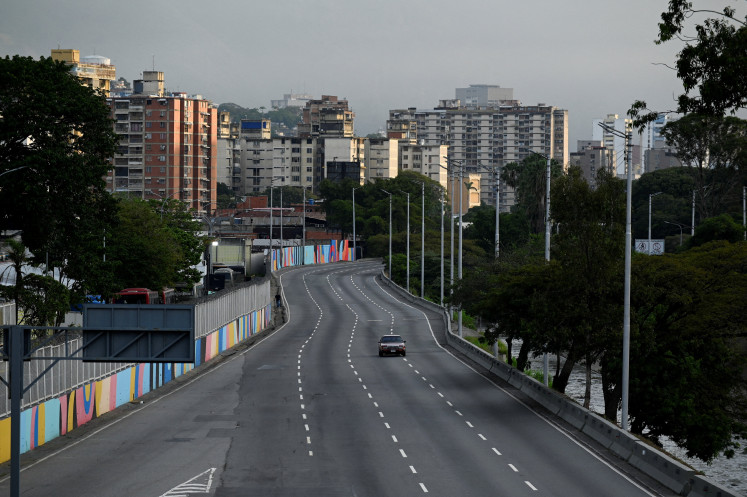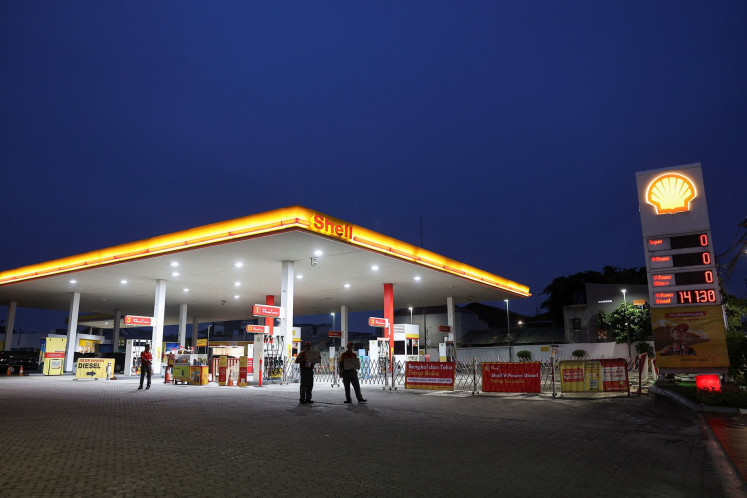Popular Reads
Top Results
Can't find what you're looking for?
View all search resultsPopular Reads
Top Results
Can't find what you're looking for?
View all search resultsThe Banda Islands: From tragedy to tranquil tourist attraction
The quiet, peaceful region of Banda Neira Island in Maluku province, home to around 9,000 people, faces a narrow strait and the conical-shaped, menacing Gunung Api volcano.
Change text size
Gift Premium Articles
to Anyone
T
he buildings lining its flower-filled streets comprise some fine examples of gracious, old colonial architecture, many now crumbling under the pitiless tropical sun.
On a plateau above Banda Neira is the pentagonal-shaped Fort Belgica. Built in the 1620s, this massive fortress has survived numerous earthquakes, yet is in fairly good condition.
Climb up to one of the towers for a sweeping view of Banda Neira, the sleepy harbor, nutmeg groves and looming volcano that erupted as recently as 1988.
There are a lot of things to see in Banda Neira for those looking to step back into the past, when the Dutch colonialized Indonesia.
One of the area’s main attractions is the hauntingly empty governor’s palace, now called Istana Mini (Mini Palace), which was once the mansion of the all-powerful Dutch controleur (inspector). This palace was built in the 1820s and features giant granite slabs, bright floor tiles, shiny marble, heavily carved beams, huge wooden doors and shuttered windows.
A stern, heavy, colonial air of genteel decay pervades the palace. In a side garden is a statue of the proud Dutch King Willem III, now rusting away in quiet obscurity.
Survivor: Fort Belgica, which was built in the 1620s, has survived numerous earthquakes. (Ian Burnet/File)Another great place to visit in Banda Neira is the Rumah Budaya Museum (Cultural Museum), which features centuries-old paraphernalia, including Dutch coins, clay pots, basketry, an old ship’s bell and a fully functioning wind-up gramophone.
The Dutch Reform Church in the center of Banda Neira is also not to be missed as it includes a fascinating collection of old Dutch tombstones in its grounds.
Banda Neira Island is the only settlement of significant size on any of the Banda Islands, a group of nine jewel-like volcanic islands that were an important part of history from the 17th to the 19th century, an era during which European colonialists, including the Dutch, put high importance on spices.
The Banda Islands produce aromatic spices, such as nutmeg and cloves. These spices influenced the battles, politics and the rise and fall of the great mercantile empires of Europe — the Portuguese, Dutch and English — that fought over control of the spice trade.
Until the invention of refrigeration, spices were inextricably bound to the history of these islands. The demand for cloves and nutmeg reached such a fever pitch in Europe during the 16th century that expeditions were dispatched in search of the source.
The Portuguese were the first Europeans to land here in 1512, and the first Dutch fleet arrived in 1599. In 1621, the ruthless Dutch governor-general Jan Pieterszoon Coen, whose name Dutch historians have said “reeks of blood”, invaded the Bandas from Batavia with a force of 2,000 men and carried out what today would be called genocide.
Crystal-clear water: Tourists prepare to explore diving spots around the Banda Islands. (Ian Burnet/File)To acquire control of the spice trade, Coen exterminated two-thirds of the indigenous population, selling the remainder into slavery or driving them into the hills to die of exposure.
The Dutch then imposed a brutal monopoly on nutmeg production, carving up the islands into 70 plantations that were offered free to Dutch perkenier(planters). Production was strictly controlled and prices were fixed, ensuring a guaranteed income for the perkenier and huge profits for the Dutch East India Company (VOC) for more than a century.
The irony to come out of Banda’s suffering is that, while the rest of the world considered nutmeg and mace rare delicacies, the inhabitants of these islands have never used them as condiments.
Centuries later, the islands still offer a magnificent geography with tropical forests, white sand beaches, puffing volcanoes beneath blue skies, nutmeg plantations, affordable and easygoing accommodations, decaying Dutch forts, peerless coral reefs and crystal waters so clear that even minute objects can be seen to depths of up to 8 fathoms for tourists to enjoy.
Many races, languages and religions have produced today’s homogenous, highly distinct and complex Bandanese people.
Down time: Local residents, some dressed in traditional costumes, pose for a photograph on a clear afternoon. (Ian Burnet/File)As yet uncorrupted by mass tourism, the Bandas receive a trickle of travelers, odd adventurers and — increasingly — luxury cruise ship passengers. Besides tourism and limited nutmeg production, the only other sector of the economy that shows promise is tuna fishing.
The Banda Islands are off the beaten track in the extreme. To get to the highlands, the most viable forms transportation are Pelni boats going from Ambon, the provincial capital. The boats operate weekly and cost on average Rp 125,000 (US$9.07) for a one-way trip, which usually lasts between eight to 12 hours.
Tourists and visitors can also access the Banda Islands using flights from Ambon to Banda Neira. These flights cost around Rp 400,000 per person for a one-way trip.
Most of the accommodations on the islands are along the waterfront, with sweeping views of the harbor and the surrounding islands. The cheapest accommodations are the dozen or so homestays run by local residents. They include breakfast in their daily rates, as well as snorkeling equipment rentals and arrangements for boat charters to the outer islands.
The Delfika, located in a former perkenier mansion, regularly hosts foreign backpackers.
Other excellent value budget options are the Delfika 2, Vita and the Mutiara Guesthouse.
A more expensive is Hotel Maulana, a rebuilt Dutch-colonial hotel with a nice veranda overlooking the waterfront between palms and old Ketapang trees. Laguna Inn is another principal tourist hotel. Both rent canoes, motorboats, snorkeling equipment and arrange tours and marine excursions. The best accommodation on the island is at the Cilu Bintang Estate, which is a beautifully remodeled Dutch colonial building.

